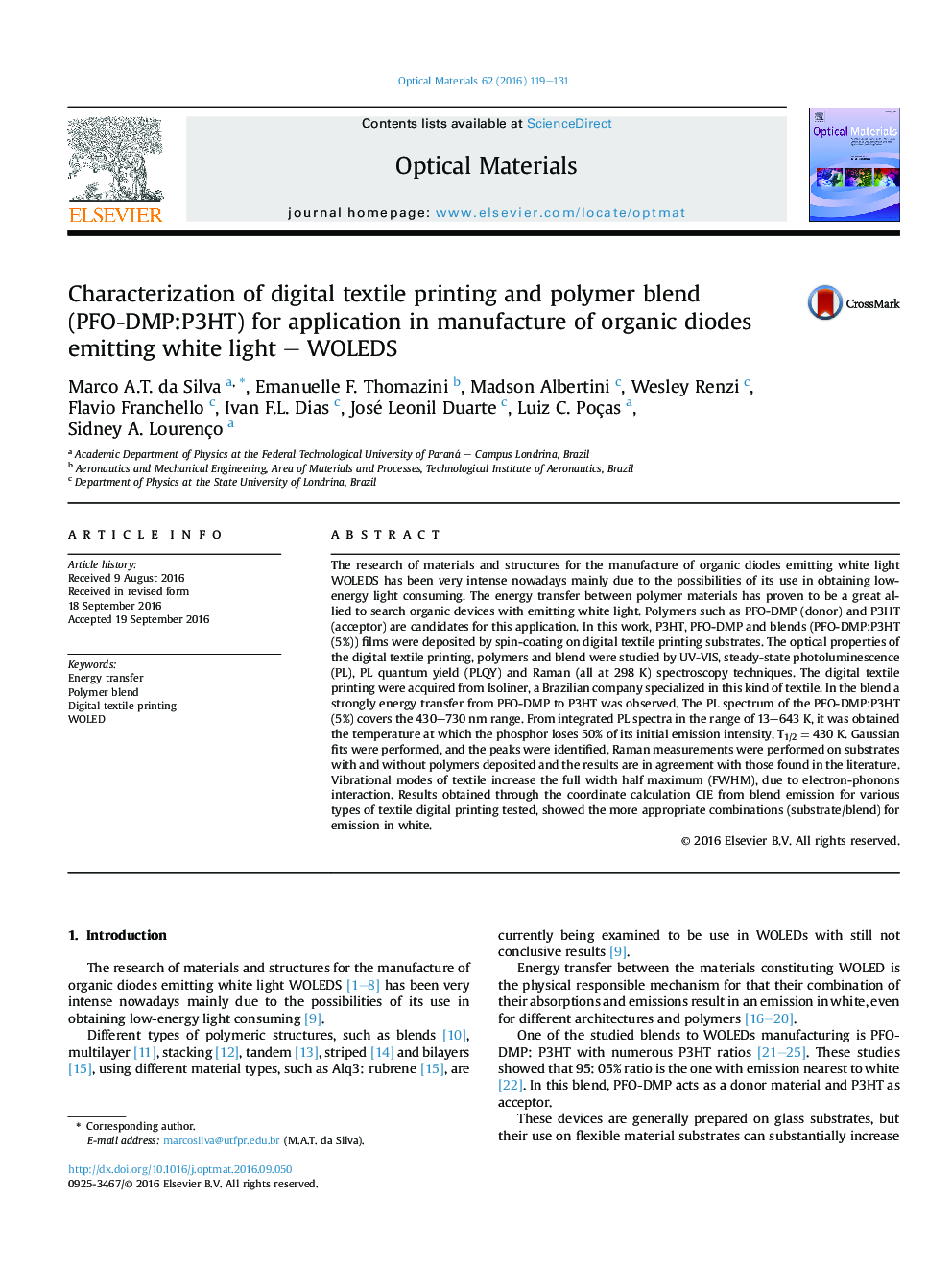| Article ID | Journal | Published Year | Pages | File Type |
|---|---|---|---|---|
| 5443018 | Optical Materials | 2016 | 13 Pages |
Abstract
The research of materials and structures for the manufacture of organic diodes emitting white light WOLEDS has been very intense nowadays mainly due to the possibilities of its use in obtaining low-energy light consuming. The energy transfer between polymer materials has proven to be a great allied to search organic devices with emitting white light. Polymers such as PFO-DMP (donor) and P3HT (acceptor) are candidates for this application. In this work, P3HT, PFO-DMP and blends (PFO-DMP:P3HT (5%)) films were deposited by spin-coating on digital textile printing substrates. The optical properties of the digital textile printing, polymers and blend were studied by UV-VIS, steady-state photoluminescence (PL), PL quantum yield (PLQY) and Raman (all at 298Â K) spectroscopy techniques. The digital textile printing were acquired from Isoliner, a Brazilian company specialized in this kind of textile. In the blend a strongly energy transfer from PFO-DMP to P3HT was observed. The PL spectrum of the PFO-DMP:P3HT (5%) covers the 430-730Â nm range. From integrated PL spectra in the range of 13-643Â K, it was obtained the temperature at which the phosphor loses 50% of its initial emission intensity, T1/2Â =Â 430Â K. Gaussian fits were performed, and the peaks were identified. Raman measurements were performed on substrates with and without polymers deposited and the results are in agreement with those found in the literature. Vibrational modes of textile increase the full width half maximum (FWHM), due to electron-phonons interaction. Results obtained through the coordinate calculation CIE from blend emission for various types of textile digital printing tested, showed the more appropriate combinations (substrate/blend) for emission in white.
Keywords
Related Topics
Physical Sciences and Engineering
Materials Science
Ceramics and Composites
Authors
Marco A.T. da Silva, Emanuelle F. Thomazini, Madson Albertini, Wesley Renzi, Flavio Franchello, Ivan F.L. Dias, José Leonil Duarte, Luiz C. Poças, Sidney A. Lourenço,
